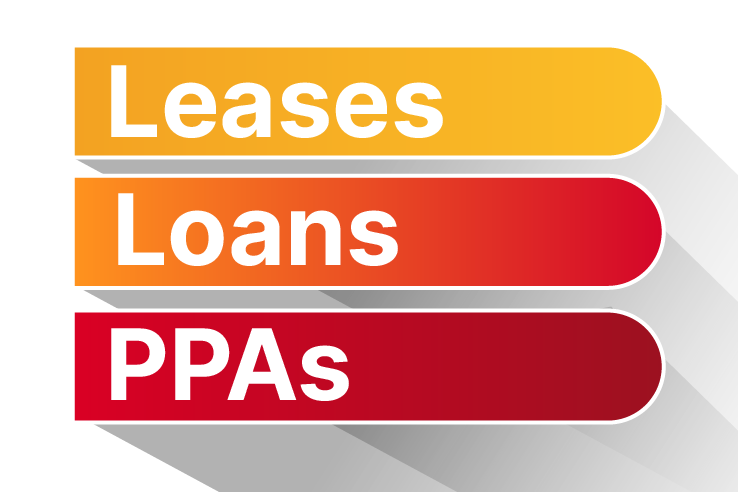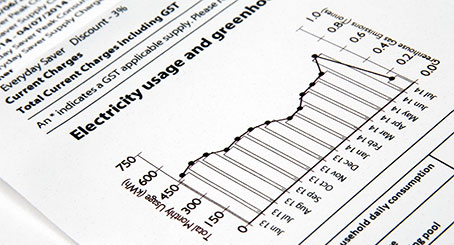
As the demand for sustainable energy solutions continues to rise, residential solar power and battery systems have become increasingly popular amongst homeowners looking to reduce their carbon footprint and energy costs. Financing options play a crucial role in making these systems accessible to a wider audience. In this comprehensive guide, we will compare three common residential solar financing options: leases, power purchase agreements (PPA), and solar loans, and hopefully educate you about your financial options when going solar in Arizona. Additionally, we will delve into how the 30% Federal Investment Tax Credit (ITC) is treated in each of these arrangements.
Residential Solar Leases
Residential solar leases (typically 20 or 25-year terms) allow homeowners to use solar panels and home batteries without owning them, giving flexibility to the homeowner who wants to enjoy the benefits of solar power without the upfront costs or the responsibility of maintenance. In this arrangement, a third party owns and maintains the solar panels and batteries, while the homeowner pays a fixed monthly lease fee.
Pros
No upfront costs for installation.
Maintenance is typically the responsibility of the leasing company.
Predictable monthly payments (although monthly payment may increase annually by 2-4%)
Cons
Homeowners do not directly qualify for the Federal ITC, therefore not eligible for any tax credits/ benefits.
Long-term commitment may limit flexibility.
Best suited for:
Homeowners who prioritize low upfront costs and want hassle-free maintenance.
Fixed Rate Power Purchase Agreements (PPA’s)
Power Purchase Agreements (typically 20 or 25-year terms) are like a lease, but the homeowner pays for the actual energy generated from the solar system and a predetermined fixed per kilowatt hour ($kwH). While the $kwH rate is predetermined, the energy generated by the system will vary each month, resulting in differing monthly payments. In months with more solar production, the payment is higher, but in lower production months, the payment will be lower. A third party owns and maintains the solar panels and batteries, and the homeowner enjoys the benefits of solar power without worrying about performance variations.
Pros
No upfront costs for installation.
Variable monthly payments (although $kwH rate may increase annually by 2-4%)
Maintenance is typically the responsibility of the PPA provider.
Cons
Homeowners do not directly qualify for the Federal ITC.
Long-term commitment may limit flexibility.
Best suited for:
Homeowners who prefer a variable monthly payment and want to avoid potential fluctuations in energy production.
Solar Loans
Solar loans allow homeowners to finance the purchase of solar panels. The homeowner owns the system and is responsible for maintenance. Solar loans can be secured or unsecure, providing flexibility in terms of interest rates. Typical solar loans can be as short as 18 months or as long as 25 years.
Pros
No significant upfront costs for installation.
Homeowners may* qualify for the 30% Federal ITC.
Ownership of the solar panels.
Potential for long-term cost savings.
Cons
Upfront costs may be higher than leasing or PPAs.
Maintenance is the responsibility of the homeowner.
Best suited for:
Homeowners who want to own their solar panels, *may qualify for the Federal ITC and are willing to invest in a long-term cost-saving solution.
Treatment of Federal Investment Tax Credit (ITC)
Residential Solar Leases and PPA’s: In these financing options, the third-party owner of the solar panels qualifies for the Federal ITC, not the homeowner. This is because the homeowner does not own the solar system. However, the benefits of the ITC are indirectly factored in through lower monthly payments to the homeowner.
Solar Loans: Homeowners who finance their solar panels through loans are eligible for the 30% Federal ITC, as they own the solar system. This tax credit can significantly reduce the overall cost of the solar installation.
Understanding Monthly Payment Escalators
It’s essential for homeowners considering leases and PPA’s to be aware that these financing options may include annual monthly payment escalators of 2-4%. These escalators can lead to gradual increases in monthly payments throughout the agreement, impacting overall costs.
Long-Term Commitments and Considerations
While residential solar leases and PPA’s offer the advantage of minimal upfront costs and maintenance responsibilities, homeowners must carefully consider the longterm commitments associated with these financing options. Typically spanning 15-25 years, these agreements may present challenges if homeowners want to exit before the term concludes, such as selling their home.
Leases and PPA’s:
Conclusion
Residential solar financing options such as leases, PPA’s, and solar loans provide pathways for homeowners to embrace solar power without the burden of high upfront costs. Understanding the indirect benefits of the Federal ITC, including reduced monthly payments (excluding escalators for leases and PPA’s), is crucial for making informed decisions. Additionally, recognizing the long-term commitment and potential exit costs is essential for homeowners navigating these agreements. As the solar energy landscape evolves, informed choices empower homeowners to contribute to a sustainable future while enjoying the economic advantages of solar power.
For more information visit the Solar Protection guide.



